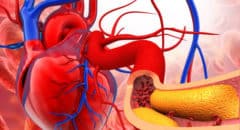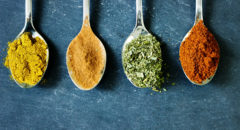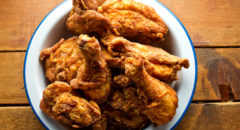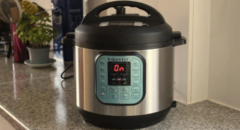 There is no longer one “right” way for people with diabetes to eat. Instead, the American Diabetes Association suggests people individualize their diets so they can eat what feels right to them and still maintain proper blood glucose, also known as blood sugar control. With meal planning tools like carbohydrate counting, you can do just that.
There is no longer one “right” way for people with diabetes to eat. Instead, the American Diabetes Association suggests people individualize their diets so they can eat what feels right to them and still maintain proper blood glucose, also known as blood sugar control. With meal planning tools like carbohydrate counting, you can do just that.
What Is Carbohydrate Counting?
Carbohydrate counting, also called carb counting, is a meal planning tool that gives you greater flexibility in your meal choices and helps you to understand how food affects your blood glucose level, also called blood sugar. Carbohydrate counting involves keeping track of the amount of carbohydrate in the foods you eat each day.
When you eat carbohydrate-containing foods like bread, grits, peaches, milk or even kale, your body breaks these foods down into sugar—glucose. The glucose then enters into your bloodstream, where it can be used to energize the cells of the body. The more carbohydrate-containing foods you eat at a meal or snack, the higher your blood glucose level will go.
The amount of carbohydrate in foods is measured in grams. To count grams of carbohydrate in foods you eat, you’ll need to know which foods contain carbohydrates, how to estimate the number of grams of carbohydrate in the foods you eat and how to add up the number of grams of carbohydrate from each food you eat to get your total for the day.
It's reasonable for most adults to consume 45-60 grams of carbohydrate at a meal and eat 15-30 grams of carbohydrate for snacks. Adults on low-calorie diets and adults who are physically inactive may want to aim for the lower end of that range. A registered dietitian nutritionist or diabetes educator can help you develop an individualized healthy eating plan based on carbohydrate counting.
Which Foods Contain Carbohydrate?
Foods that contain carbohydrates are often grouped together as the starch, vegetable, fruit, and milk group.
Starch group. Grains, such as bread, biscuits, pancakes, noodles, pasta, crackers, cereals, and rice. Also, starchy vegetables such as corn, peas, white and sweet potatoes, and all kinds of beans.
Tip: Buy whole grain varieties from the starch group such as whole grain bread or brown rice. Eat fewer fried and high-fat starches such as regular biscuits, cornbread, and pancakes.
Vegetable group. Asparagus, broccoli, carrots, celery, collard greens, green beans, kale, lettuce and other salad greens, peppers, spinach, tomatoes, and zucchini.
Tip: Steam vegetables using a small amount of water or low-sodium broth. If you add fat, use a small amount of canola, olive oil or tub margarine instead of fat from meat, butter, or shortening. For canned vegetables, “no salt added” is the best choice.
Fruit group. Apples, bananas, berries, mangoes, melons, and oranges.
Tip: Eat fruits raw, as juice with no sugar added, or canned in their own juice. Avoid canned fruit in heavy syrup. Eat pieces of fruit rather than drinking fruit juice.
Milk group. Milk, yogurt, fortified soy milk, evaporated milk and buttermilk.
Tip: Drink fat-free or low-fat milk. Eat low-fat or fat-free yogurt.
Small amounts of sweets such as cakes, cookies, candy, and other desserts can be included in a healthy diet—even if you have diabetes. But be aware that most of the calories in cakes and cookies come from carbohydrates and fat, often unhealthy saturated fat and trans fat.
How Much Carbohydrate is in Food?
When you count carbs in foods that you cook, you will have to measure the portion of food after cooking it. For example, cooked long grain rice has 15 grams of carbohydrate per 1/3 cup. If you eat a cup of cooked long grain rice, you will be eating 45 grams of carbohydrates.
Here are some examples of foods and servings sizes that have 15 grams of carbohydrate:
1⁄2 cup of canned fruit (without the juice or syrup)
1 cup of melon or berries
2 tablespoons of dried fruit
1⁄2 cup of cooked oatmeal
1/3 cup of cooked pasta (can vary with the shape)
1/3 cup of cooked long grain rice
1⁄4 cup of cooked short grain rice
1⁄2 cup cooked beans, peas, or corn
1 slice of bread
3 cups popcorn (popped)
1 cup milk or soy milk
3 ounces of baked potato (sweet or white)
Packaged foods have labels that tell you how many carbohydrates a particular food has.The nutrition facts information shows you what a serving size is and how many grams of carbohydrates that serving will give you. Be aware that the information on the label is for one serving. If you have two servings instead of one you need to multiply the label information by two. For example, if the label on a bag of chips states that it contains two servings, and one serving of chips provides 11 grams of carbohydrate. If you eat the entire bag of chips, you have eaten 22 grams of carbohydrates.
Carbohydrate Counting Made Easy
The Internet has many carbohydrate counting tools that let you enter a type of food and find out what nutrients the food contains, including carbohydrates. Try visiting these sites:
- nal.usda.gov/fnic/foodcomp/search —an online database from the U.S. Department of Agriculture Nutrient Data Lab
- https://www.supertracker.usda.gov/foodtracker.aspx - an online tool to analyze and track your daily food intake.
There are also many books available about carbohydrate counting and meal planning such as The African American Guide to Living Well with Diabetes.
 Constance Brown-Riggs, MSEd, RD, CDE, CDN is a registered dietitian, certified diabetes educator, national speaker and author of The African American Guide to Living Well with Diabetes. She is Dannon One Yogurt Every Day Nutrition Advisor.
Constance Brown-Riggs, MSEd, RD, CDE, CDN is a registered dietitian, certified diabetes educator, national speaker and author of The African American Guide to Living Well with Diabetes. She is Dannon One Yogurt Every Day Nutrition Advisor.








